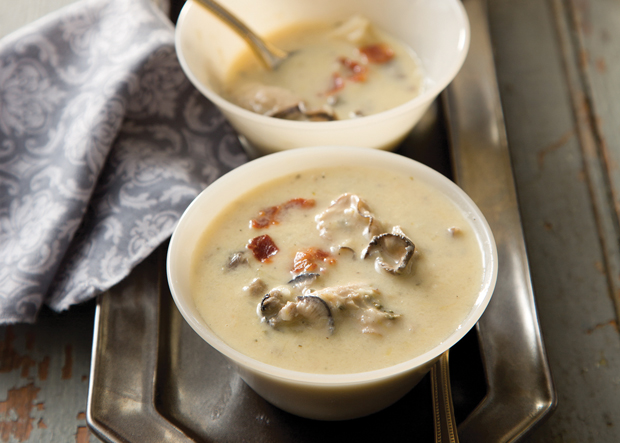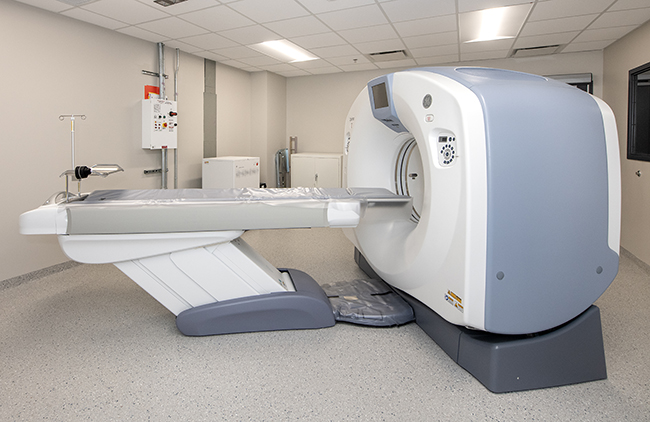Taking Health to Heart
03 Jan 2015
Making lifestyle changes ensure a healthy heart for the long term
By JAMIE PENN

It became the metaphor for the sources that power the world for good reason—the symbol for love, the center of the city, the purpose behind all things organized. The heart is the most powerful and one of the most vulnerable centers of our physiological universe. It’s our biological engine.
And while it’s running the show, we can all get so caught up in scrambling to run our own shows filled with endless to-do lists, work, family, friends, and hectic schedules, that we often don’t give it a second thought. Mindfulness of our heart health changes in February of each year, christened American Heart Month by the Centers for Disease Control and Prevention.
The incidences of heart disease and conditions that cause it have risen at alarming rates. While 1 in 31 women die each year from breast cancer, 1 in 3 deaths in women can be attributed to heart disease. The risk for hypertension (high blood pressure) in children and teens has risen 27% in the last decade and the presence of PAD (peripheral arterial disease), caused from plaque build-up in the arteries, rose 24% from 2000 to 2010.
The good news is that while we are often the problem, we are also the solution. Heart disease is the most preventable of diseases. Depending on age and family medical history, the heart is like every good engine—with good, clean fuel, scheduled maintenance, and regular, responsible use, it can power us into the future without a hitch.
An Ounce of Prevention
An ounce of prevention, as the adage goes, is worth a pound of cure. Obesity, poor nutrition, a sedentary lifestyle, stress, genealogical history, smoking and excessive alcohol use are all factors that can lead to heart disease. And, they’re almost all factors that we have control over.
“Heart health is so easily modified with diet and lifestyle change,” says Duke Certified Integrative Health Coach, food educator and speaker, Ryanna Battiste, ao-owner of GRUB in Wilmington.
And while we all know that good health is an integral component to living a long, fulfilling life, change is not always easily implemented.
There are those, Battiste said, that are either self-motivated enough, or properly conditioned by upbringing to lead themselves down the road to optimum nutrition and physical health. But, many more aren’t getting the proper nutrition and either feel that they don’t have time to make the proper lifestyle changes or are simply unaware of how to implement those changes.
This is where Battiste, and her business partner, Liz Flint-Somerville, come in. At GRUB, they offer classes and one-on-one nutritional coaching sessions designed to offer a more holistic approach to nutrition.
“The goal is to raise awareness, and to encourage clients to take baby steps toward developing new dietary habits,” she said.
Changing behavior patterns often takes guidance, says Battiste, especially where health is concerned. Although the intention to make an instant change is noble and good, a new year’s resolution-style approach to holistic health rarely results in a long-term solution to heart disease prevention.
“We tend to look at lifestyle changes in terms of black and white, like it’s either all or nothing. But it’s important to try to take a more sustainable approach.”
Battiste says that good nutrition has typically taken on the bland reality of fruits, vegetables, and grains = good; fats, red meat, dessert = bad. Battiste says that optimal nutrition is much more dynamic than the aforementioned scheme.
“’The pyramid’ is out the window. And, the USDA’s latest recommendation, ‘the plate’, is even controversial. We translate ‘proper nutrition’ into real foods by trying to help clients balance their macronutrients by choosing the healthiest choices within each category.”
But, fortunately for those of us steeped in a tradition of pyramid, it’s not all bogus. Fruits and vegetables are still at the top of the list, but Battiste says that fat is up there too. According to Battiste, as well as the Harvard School of Public Health, fat is not bad! It’s the kind of fat that matters. Sticking with monounsaturated and polyunsaturated fats will ensure arterial health and overall health by helping the body to absorb nutrients that would otherwise be lost. High fat foods such as nuts, some legumes, avocados, and salmon are good examples of such fats. Red meat, butter, dairy and cheese contain saturated fats than can cause harmful buildup in the arteries when consumed in excess.
“One of the worst things for the cardiovascular system is sugar,” says Battiste. Refined sugar causes inflammation in the body, and inflammation can cause heart disease. Sugar also strips the body of important nutrients. Less inflaming sweeteners are maple syrup and honey, which should be used in moderation.
Pumping Into Hearth Health
Local certified personal trainer, LaMaine Williams of The Fitness Squad, doesn’t walk anywhere. He breaks into a slight jog on the way to the phone, slightly gallops on his way to pick up weights. He’s a firm believer that when working on heart disease prevention or recovery from heart disease that individuals must play to their strengths in order to achieve long-term health.
“Having a healthy heart is not about one thing. It’s about exercise, but it’s also about nutrition and mental health. They’re all important. You have to just do as well as you can at the one that suits your personality best and know that the others will come,” Williams said.
Per the description, cardiovascular exercise gets all the attention of the heart conscious. But, Williams says that his gym and others like it aren’t full of weights and weight-training equipment for no reason. Hearth health is also about overall health and maintaining a healthy body weight.
“Maintaining muscle strength is almost as important as cardiovascular exercise. You can do all the cardiovascular exercise you want but once it’s over, it’s over. With weight training, you’re building muscle which works for you all the time.” Williams encourages his clients to get in a multi-body workout routine, training both with weights and in some form of cardiovascular exercise.
While the American Heart Association does recommend a regiment of 30 minutes of cardiovascular exercise five days each week and weight training two days each week for optimum heart health, Williams said sometimes you can only do what you can do. Something, he says, is better than nothing.
“People think they have to put in a certain amount of exercise for it to count. But, if you have 15 minutes, do a 15-minute multi-body exercise at home on a mat. If you have an hour, work out for an hour. Whatever time you have, just do it,” Williams said.
Gyms are fantastic outlets for creating a community around fitness, but Williams also encourages his clients to find other outlets. He has clients that dance two nights a week, walk the walking trails around the city, and play sports. “The only days you don’t need to exercise are the days you don’t eat,” he said.
Last But Not Least
While the evidence remains inclusive, it’s pretty clear that stress can contribute to heart disease in a big way through issues such as high blood pressure. And, it’s equally clear that finding better ways to manage stress can contribute to heart health.
Whether it’s through nutritional meal preparation, releasing endorphins at the gym or on the dance floor, or through mindful meditation and yoga, chilling out by finding better ways to manage stress and making healthier lifestyle choices could literally be a lifesaver.
For more information on heart health, talk to your doctor or go to the American Heart Association’s website: www.heart.org.














